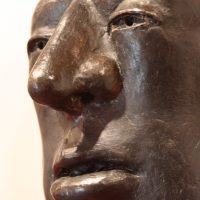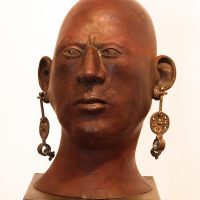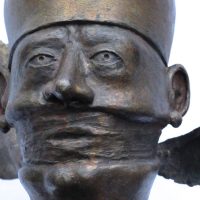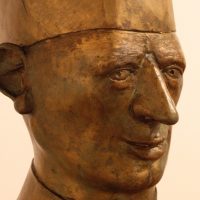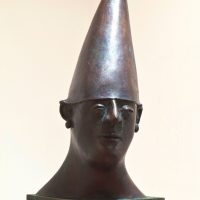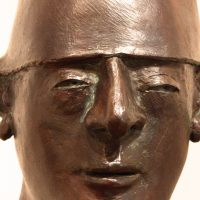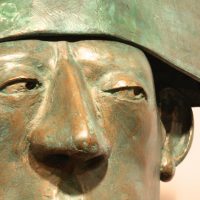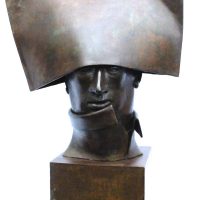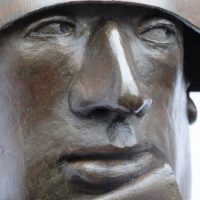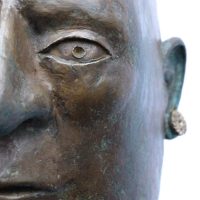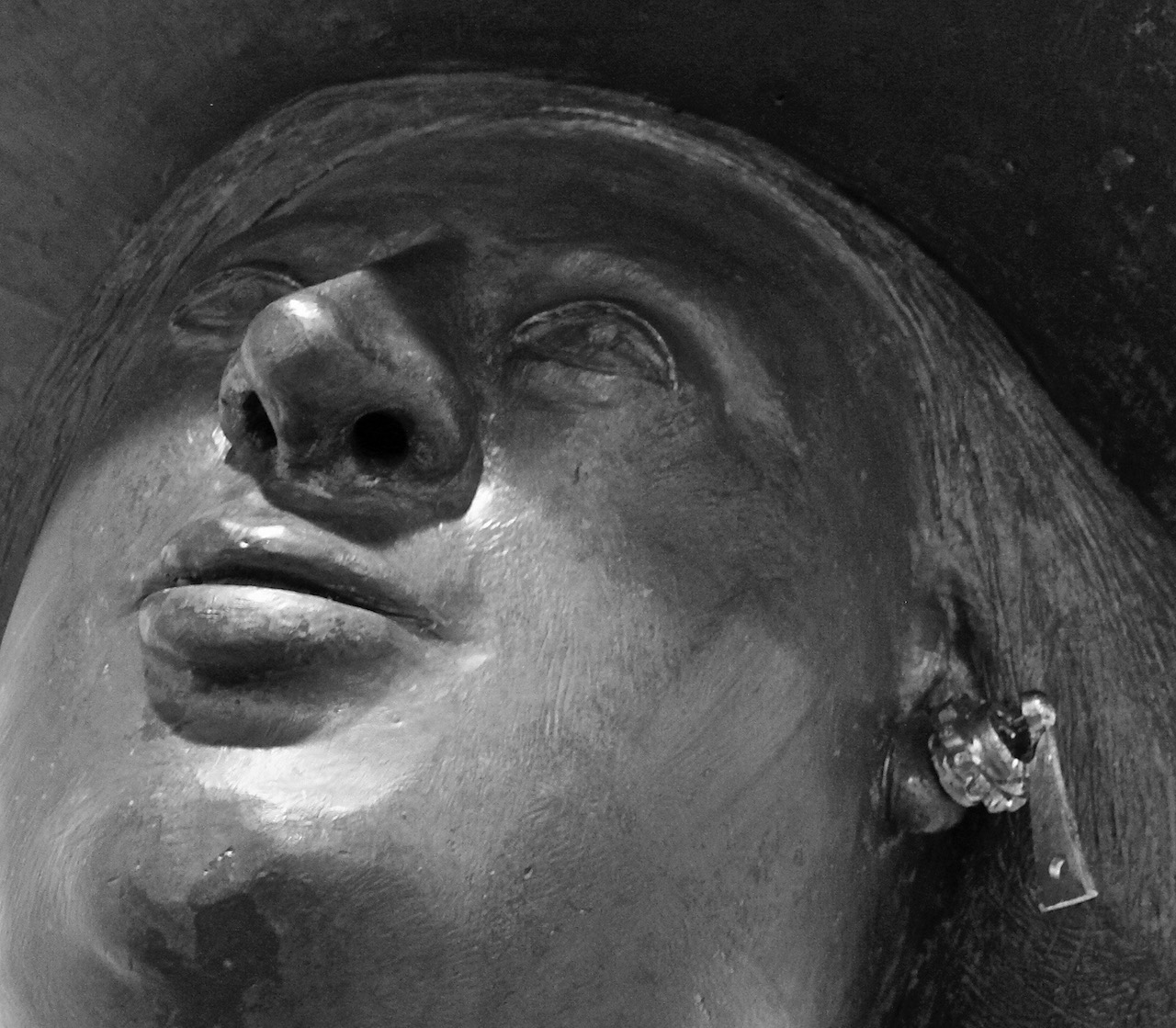
The ten bronze heads were created by George Wallace. They were made in Victoria B.C. between the years 1986 and 1998, the heads modeled in wax and then cast in bronze by John Miecznikowski in Ontario. They have previously been exhibited at the Art Gallery of Hamilton, and at the Art Gallery of Greater Victoria.
In George Wallace’s own words from the catalogue of the AGH exhibition:
The bronze heads have been made over the last ten years — all made since we moved into this wooden house in 1986 (hence, no welding). And it’s only the past two years that I’ve had them cast. They look like chessmen, someone said, rather heraldic. And I think that the red bases come from this notion. I have a set of Chinese carved chessmen where one set is white and the other is red. It’s only recently that I’ve begun to think of how they relate to each other. They seem to develop a relationship that’s whimsical, humorous. The quality I enjoy in poetry is the quality of wit. I like the poetry of late l7th, l8th century because it’s so concise and inventive. And I think wit is the great charm of all works of art – the major quality of being able to turn a phrase humorously or maliciously. The drawings of Rowlandson or Gillray, for example, and it’s the essence of Goya to be concise, and witty, even elegant – which you don’t often find in art at the moment. It’s a great artistic virtue. Ten Characters from a Spanish Comedy is nonsense, of course. It simply gives you a framework for a performance of some kind. They’re related to one another in some way, goodness knows in what way. They’re watching, responding to one another. The woman with the expensive hat is pleased with herself. The others are in various ways, angry or cantankerous or worried. The boss man in the centre is arrogantly powerful. The sizes of them are a measure of their own self-importance and like medieval pictures; their sizes indicate their social importance.
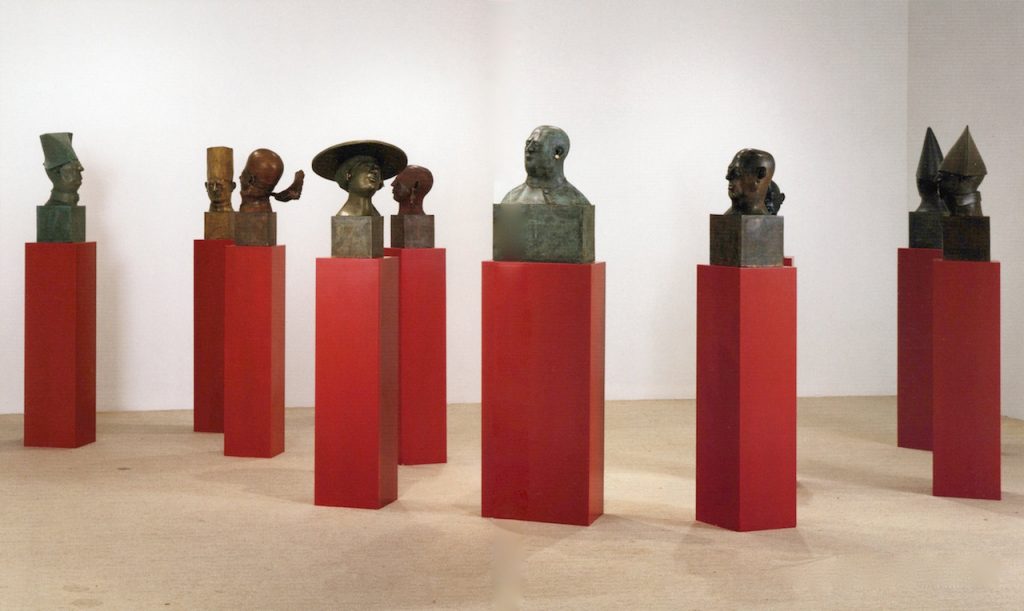


In September 2011 the ten heads were displayed on their red pedestals, which place the heads nearly at eye-level, on stage for the first time ever, like real actors, together with the panelists at the Salt Spring National Art Prize (SSNAP) panel discussion. Veronica Tennant, one of the panelists, and Susan Benson, both of whom come from theatrical backgrounds, immediately recognized the theatrical traditions of the Commedia dell’arte these figures represent, and have proposed that the bronze heads should belong in a public institution devoted to the theatrical arts.
The following text comes from that event:
The bronze heads in “Ten Characters from a Spanish Comedy” reference the Commedia dell’arte of the 16th century Catholic Europe. Humour and the use of head dress to identify stock characters, allowed the theatre of political commentary to go unscathed in a time of repressive regimes. Outsize hats would continue to identify villains and bald pates buffoons in the theatre of the absurd and in political cartoons well into the 19th century. In Commedia dell’arte women’s roles were played by women for the first time.
Commedia dell’arte which began as street theatre has found its way into every aspect of the visual and performing arts. It continues to be used as the theatre of protest, mostly in modern times by the San Francisco Mime Troupe who in the 1960s used the format to comment on perceived political repression in the United States of the growing American civil rights movement and covert interventions abroad.
With wit and shrewd knowledge of human nature, George Wallace applied the ideas of the Commedia dell’arte to character studies of our late 20th century selves. He began the work in 1986 at a time of economic expansion and of visual and verbal bombast. They are the observations of an erudite and funny man, who viewed the world with a wry scrutiny. The carefully chosen accessories comment on the facades he observed. Each head was placed on a red pedestal, with no instructions as to how they are to be mounted. He regarded them as game pieces to be moved and manipulated. The artist expected the humorous possibilities for visual comment on human folly and relationships to be explored and continue on with each new exhibit of the work.
Ten Characters from a Spanish Comedy

